Manufacturers today have a range of services available to aid production, marketing, and design. Technologies have evolved and traditional methods like hand-drawn designs and production photoshoots are becoming less common.
Manufacturing companies must take advantage of new technologies to ensure an efficient process. This helps provide a competitive advantage and a cost-effective system that maximizes profit.
One particular set of services that are frequently used in manufacturing are 3D furniture design and CGI rendering services. Developments in 3D modeling software have opened a whole new world of possibilities for manufacturing.
Companies can use these furniture design services to improve their efficiency and market their products in a more effective way. In this article, we look at the types of 3D furniture design and CGI rendering services commonly used in manufacturing industries.
3D Design Services Eclipse Traditional Methods
First, let’s look at why these 3D design services are becoming so popular. In modern manufacturing, time is vital. Companies must have smooth manufacturing processes—developing products as quickly as possible while still ensuring high-quality levels.
Moreover, other areas of their business must be effective too—particularly promotion and marketing. Manufacturing businesses must have a powerful marketing strategy that utilizes new technology and provides a favorable experience to their customers. This is where 3D furniture design and CGI rendering services reap dividends.
As you will see below, using such technologies can have an amazing impact on manufacturing businesses and their ability to react to their customer’s needs.
3D Furniture Design and CGI Rendering Services
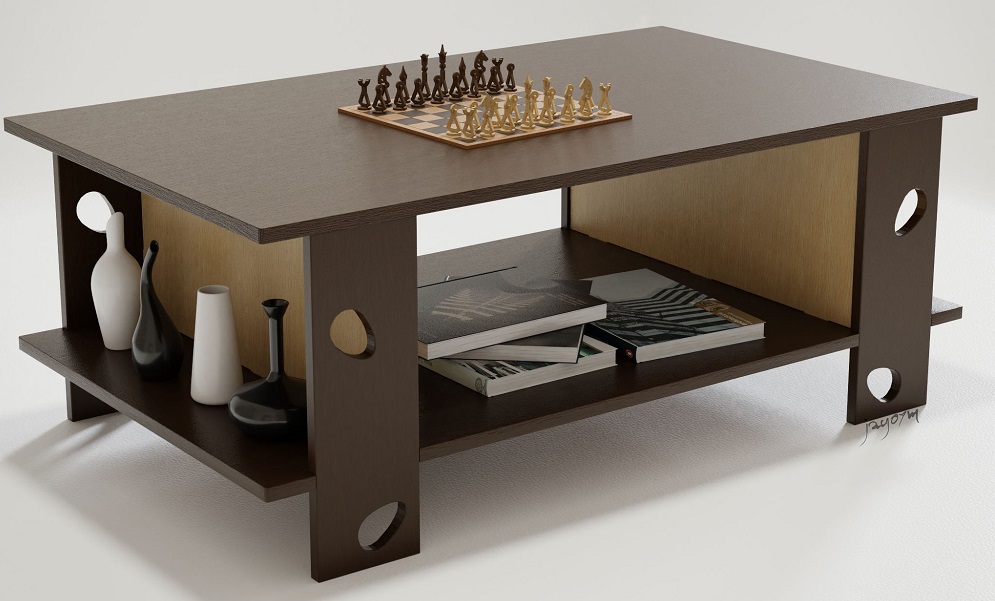
So, what different types of services are available for furniture design and CGI rendering that manufacturers can use? You would think that there isn’t much to offer except simple image creation—that isn’t true. As you can see below, 3D furniture design and CGI rendering services have many different uses.
These processes can help your manufacturing businesses in a myriad of ways—from 360-degree product images and 3D rendering to web content and 3D virtual reality rendering services. We have listed nine different services available for these processes below:
1. 360-Degree Product Images
In ages past, product images for websites and other digital media were static. You may have had a simple static image or a combination of images in a gallery showcasing different angles of the furniture product.
While these images worked, they were not practical—to view the various angles meant more user input and greater effort on their part. Moreover, loading times would have been longer due to the need to load multiple images.
This is where 360-degree product images excel. You may have seen examples of 360-degree product images on popular websites like Amazon. You will have also undoubtedly been wowed by the technology and the ease by which you can see the whole product. They are often made by product engineering services.
360-degree product images essentially allow you to rotate an item—a table and chairs, for example, and see them from every possible angle. Some 360-degree images allow only for horizontal rotation. Others, however, allow you to rotate the image vertically too.
Manufacturers can utilize 3D 360-degree product rendering services to improve their web content and digital marketing. These images provide the customer with a clear idea of what their products are and how they look.
This type of 3D image can also be used in the design and production process—360-degree images could be created for various departments within the business to view and use. This could give them a clearer idea of what is expected, and how they can perform their role in relation to the product.
2. 3D Product Animation for Marketing and Design

360-degree images are extremely popular, but take this one step further and you can create full-blown 3D product animations. 3D furniture design and CGI rendering really can help enhance user experience. Moreover, they can improve a customer’s understanding of the products and how they fit in with other objects and spaces.
Product animation involves creating CGI animations from a combination of 3D models and 3D renders. Instead of having a static 3D render, or a 360-degree image, you create a mini-movie scene. Remember that animation isn’t just used for computer games and TV shows!
Let’s look at an example. Your business has designed a new oak wardrobe. You have created a series of images showing the dimensions and oak finish. To provide context and place the wardrobe in a setting, you could have an animation created showing the wardrobe in a bedroom. The camera could pan around the room.
Moreover, it could include an animation of the doors opening, showing the wardrobe complete with clothes inside. An animation like this made by a freelance 3D animator can help customers visualize the product—they can see how it could fit in their own home, and how much space it takes up.
3. 3D Furniture and Interior Models
3D modeling is commonplace in manufacturing today. 3D models are utilized throughout the design, production, and marketing processes. Why? Because 3D models look amazing but are also easy to obtain and utilize.

Consider the time it takes to create a photoshoot of a product. First, you must hire a photographer. Next, you must hire a studio, gather the products, and potentially set-up a whole room. Finally, the photoshoot is completed and the photographer must then edit the images before submission. This process could take weeks. In contrast, 3D models can be created in a couple of days—the lead times are superb and 3D designers really offer a great service.
Modeling is used for many aspects of business—product images on websites, images and scenes for printed marketing, and are made by interior design services. Technology allows 3D modeling specialists to synthesize the geometry of virtually any object.
This means that 3D models are extremely accurate and can use zero-tolerance measurements for dimensions and scale. Moreover, these models can be improved with realistic texture wraps, shading, and lighting. It is not uncommon for 3D modelers to have large libraries of models that they can use repeatedly for different purposes.
4. 3D Rendering
A 3D rendering is a photorealistic image of 3D models and objects. 3D rendering is widely used in the interior design industry—it is also used by architects, real estate agents, and other industries where furniture and properties are involved. A 3D rendering company will take a series of 3D models—like a bath, sink, shower, and cupboards, and create a realistic lifestyle rendering of a bathroom, for example.

The basic 3D models are rendered to add textures, surface materials, lighting, weather effects, and shadows. This makes the render photorealistic—i.e. it’s difficult to tell that it is a CGI image. The result is a high-quality image that can be used for promotional purposes. 3D rendering is quick, affordable, and efficient in comparison to traditional photoshoots.
3D home rendering services can be used by manufacturing companies to showcase a whole range of products. For example, a bathroom furniture manufacturer could create 3D renders of various showcase bathrooms complete with different ranges of products they produce. Using 3D renders enhances a business’s marketing.
Furthermore, it allows for flexibility and the ability to quickly make changes if needed. More importantly, the 3D renders look superb and can take your marketing to the next level. This type of 3D furniture design is quickly eclipsing traditional photography due to its efficiency and cost-savings.
5. Designs for Print Marketing
You may think that print marketing is on the decline. While digital marketing like websites, blogs, and banner ads are certainly popular, many manufacturing companies still heavily use printed media too. Printed media has a myriad of different outlets and the potential to reach a diverse range of customers.
Examples of printed marketing include brochures, catalogues, magazine articles, and newspaper adverts. As you can see, there is a host of different ways that print media can be used. A company could utilize a handful of these printed items for different purposes.
For example, newsletters could be sent to existing customers with special offers and new products. Alternatively, advertisements in relevant magazines and newspapers could be used to attract new customers.
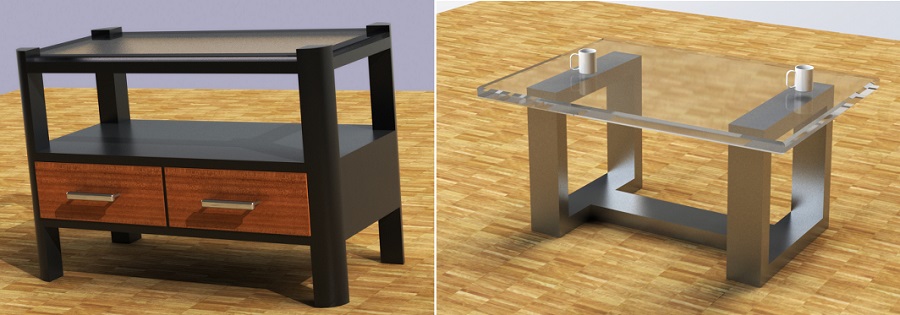
3D furniture modeling services and CGI rendering can make printed marketing stand out. Instead of using simple graphics, plain backgrounds, and photos, use 3D models instead. The quality looks fantastic. Furthermore, using 3D models gives designers increased flexibility when creating printed media. They could easily make changes or create different variants of the printed media to suit different target audiences.
Using these processes for print media can also improve the creation time. A designer who specializes in 3D rendering, for example, will most likely have skill with other software like Photoshop or Illustrator. You could utilize their talents in these different areas and not have to waste time hiring various freelancers to complete sections of the print media.
6. Wireframe Models for Production and Assembly
When businesses consider 3D rendering and CGI, they automatically assume flashy graphics and immaculate images. These processes have different uses too, however. One that is sometimes overlooked is wireframe models for production and assembly.
Wireframe models are simple 3D models that are composed of lines—nothing more than a frame of the item is created. There are no surfaces, textures, or materials. Wireframe models do not show the complete product with color. shadows, and other aesthetics. They are created for design and manufacturing purposes, and to show the dimensions and construction of products.
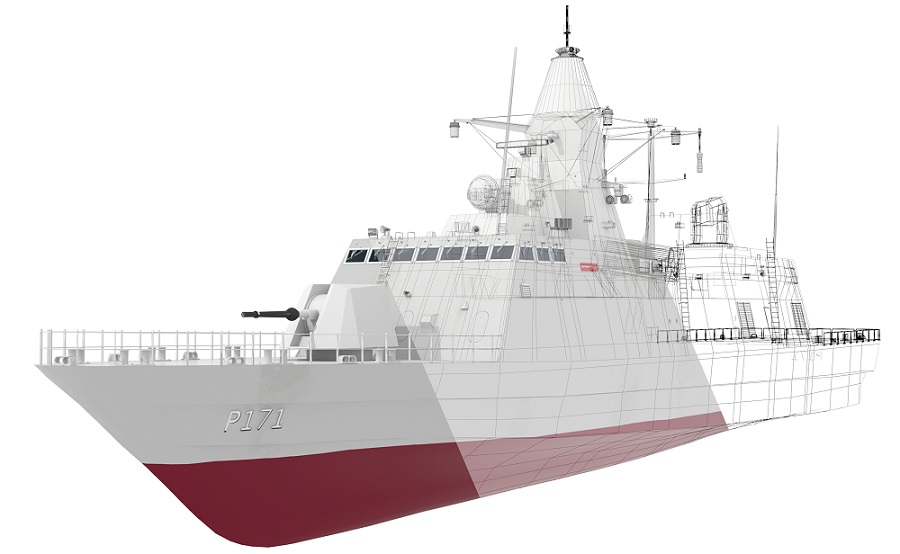
Manufacturing drawing companies could use wireframe models for a variety of reasons. Firstly, they could be used during the actual manufacturing process. Secondly, they could be used for product instructions. For example, your business has created a flat-pack table that requires assembly. Wireframe models could be used for the instruction manual, showing each part of the table and how they fit together.
Plain drawings like these have great value for manufacturers—they can be useful during the production process. Furthermore, they can ensure that customers can easily assemble products or understand their dimensions and scale without any issue.
7. Designs for Web Content
Web content is still one of the most popular marketing outlets for businesses. In today’s modern world, it is expected that a company has a high-quality website that customers can easily navigate. The website should be user-friendly and provide users with a host of information about the manufacturer’s products. CGI rendering services and 3D flythrough design services can be used to enhance web content and give users an immersive experience.
Firstly, rendering and 3D models could be used to enhance the basic design and layout of a manufacturer’s website. Websites are often enhanced with graphics, banners, and news articles—images that showcase the business’s products. CGI rendering could be used to create images like these for the website homepage and other information pages.
Secondly, 3D models and rendering can be used to enhance product listings. In modern manufacturing, customers expect mode—they want to see the products in detail and in high quality. 3D models, animations, and 360-degree images can be used to improve individual product listings. You can use these images so that users can explore your products in greater depth.
Using a combination of these images can appeal to many different customers—those who just want to view images can look at the 3D models. Alternatively, those who want more info can look at 360-degree images and animations.
8. Virtual Reality Walkthroughs
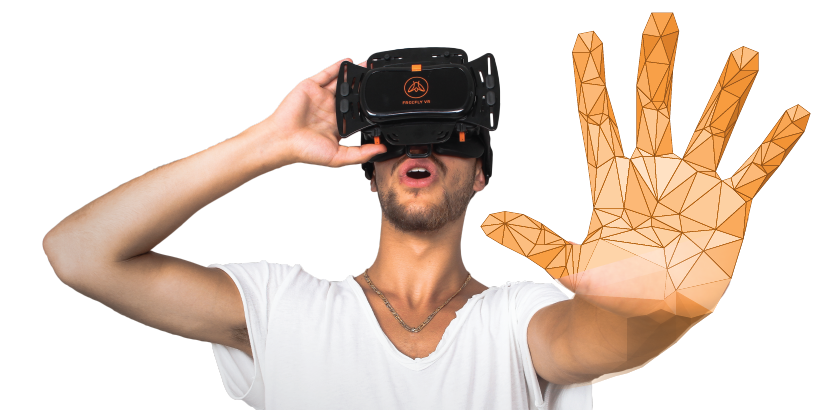
Virtual reality is one of the hot topics in modern technology. We now have access to some awesome VR devices like the Oculus Rift and the HTC Vive. These devices take us into a virtual world and provide us with a mind-bending immersive experience. While VR technology is mainly being used to create games and entertainment, it can also be used for product design and marketing.
Imagine diving into a virtual reality presentation of your potential new kitchen complete with white goods and units. You use a VR headset to physically walk through the room and interact with the different items. This concept takes marketing to a whole new level!
CGI rendering could be used to create virtual reality product showcases for your business. This could provide you with a competitive edge and improve revenue. Instead of simply looking at plain images with no clear indication of size, scale, or 3D depth, customers could inspect products in virtual reality. The immersive experience would give them a much clearer idea of what they can expect from the products. This could be used for interior design services, furniture manufacturers, and a host of other DFM services.
9. CGI Models for Video Content
Finally, CGI rendering and 3D furniture design can be used to create and enhance video content. YouTube and other social media platforms are an extremely important marketing tool. Manufacturing businesses can reach a global audience through these platforms. They can also utilize video content to enhance their message and provide a greater experience for the customer.
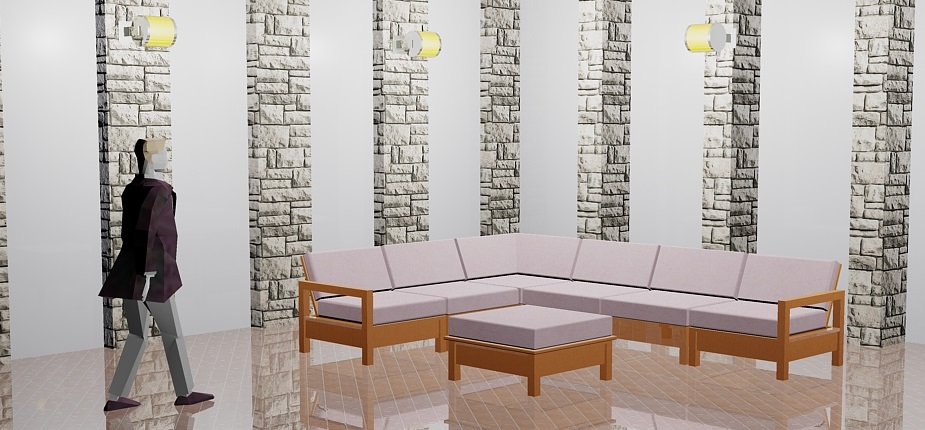
Green screens could be used together to place actors or members of the business in a CGI-generated environment containing the company’s products, for example. CGI rendering and furniture design can help enhance videos and provide relevant content to customers.
Using 3D Furniture Design and CGI Rendering Services Can Improve Manufacturing Processes
As you can see, there is a myriad of different uses for manufacturing. Both 3D furniture design and CGI rendering can greatly improve various aspects of your business. But what are the specific benefits? To conclude, we have summarized some of the main benefits below:
- Reduced process times
- Reduced costs
- Greater flexibility
- Improved ability to react to customers’ needs
- Improved experience for customers
First and foremost, manufacturing businesses can reduce their processing times for both production and marketing. Rendering and 3D furniture design are much quicker than using traditional photography and photoshoots. To create a photoshoot, there are many steps involved—the whole process can take weeks.
In contrast, using 3D architectural modeling services slashes the processing time dramatically. Designers can create images in just a few days. This allows your business to create marketing material quicker and also push through new product designs quicker.
Secondly, using processes like these provides you with greater flexibility and scope to react to customer needs. Designers can create multiple variants of furniture pieces for example in no time at all. You can create a greater product range with minimal effort. Moreover, you can provide customization options to your customers. This just isn’t possible using archaic design methods like drawings and photoshoots.
Essentially, using CGI rendering services and 3D furniture design really can help. If you want to modernize your manufacturing business, this is a sure-fire way to do so. If you are looking for 3D rendering services or 3D furniture design, remember that Cad Crowd can help. We work with a wealth of professional and skilled designers who could assist with your requirements. Find out how it works.
